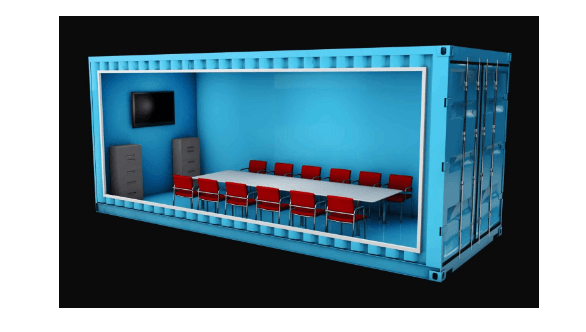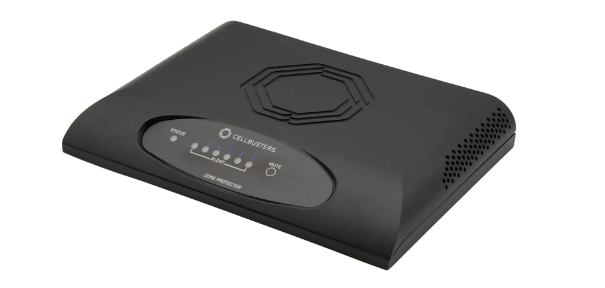Understanding SCIFs: Creating Secured Areas

When high-ranking officials need to discuss classified information while on the move, they require a secure environment. This is where SCIFs, or Sensitive Compartmented Information Facilities, come into play. Even though buildings like the White House and Capitol Building are highly secure, they still utilize SCIFs to protect sensitive information when officials are on the road.
While SCIFs gained attention in recent years with former President Donald Trump’s use of them at his Mar-a-Lago resort in Florida, many people may not fully understand what they are and how they function. Essentially, a SCIF is a highly secure room or space where sensitive information is discussed or stored. SCIFs are constructed to prevent eavesdropping, spying, and electronic surveillance, and they must meet strict security standards to be certified. They are typically used by government agencies, military branches, and intelligence agencies to safeguard classified information.
Understanding SCIFs: What Are They?

A SCIF, or Sensitive Compartmented Information Facility, is a secure room or space used by military officials, lawmakers, and intelligence agencies to discuss and store classified information. The term originated from the US Department of Defense and is used to refer to both temporary and permanent facilities created for travel or other purposes. Some well-known SCIFs include the White House Debriefing Room and secure rooms constructed while the President is traveling.
SCIFs provide a secure environment for discussing private and sensitive information, with measures in place to prevent surveillance and unauthorized entry. They also prevent the transmission of sound and electronic data, such as cell phone signals or other types of spyware. Not limited to government and military use, corporations also use similar setups to protect their confidential information and products. Overall, SCIFs are crucial for safeguarding classified information and maintaining national security.
SCIF Requirements: What Is Needed to Build a Secure Space?

In order to be truly secure, there are specific requirements a SCIF must meet before anyone can use them as intended, especially those that are permanent. Every SCIF must be accredited before they can safeguard any classified materials.
The basics specifications of a SCIF include:
Doors are limited and must have two access control technologies; one for daily use and one for locking the facility when no one is around.
All electronics, including phones, security systems, and emergency systems, must be dedicated to the SCIF. All electrical utilities must the SCIF at a single point and not travel through the space.
Radio frequency protection must be installed in case the work requires RF usage.
There shouldn’t be windows, if possible. If there are, they need to be non-opening and protected by security alarms within the guidelines if they are within 18 feet of the ground and treated with RF protection.
Vents and ducts need to be protected to meet penetration requirements. All breaks within the ducts must be fitting special inserts that make sure any audio or other electronic waves do not leave the space.
Although not a requirement, it should be noted that most SCIFs are not “flashy.” They tend to be basic rooms or buildings built with function, not design, in mind.
The US government provides a comprehensive guide on SCIF specifications, which anyone can review if they plan to build a standard SCIF. However, specific requirements may vary depending on the program’s needs, and additional materials may be necessary to achieve the desired level of acoustical features during construction.
SCIF Security
Protecting important information goes beyond just the physical building of a SCIF; those who work in a secured area must also be under scrutiny. Employees in a SCIF must have all electronics removed from their persons before entering a SCIF, including cell phones, thumb drives, cameras, and more.
Any electronics and documentation within the SCIF must remain in the area and not be brought outside. For employees, work stays at work and home at home. Frequently changing swipe cards and passwords are common too, in order to keep the SCIF secure.
Cell phone device detectors, such as the Zone Protector, are often utilized in many SCIFs in order to ensure no unwanted devices enter the area. They provide accurate detection of all cell phones, including international, and can be used in SCIFs that are either temporary or permanent.
Exploring Other Types of Secure Facilities
SCIFs are not the only types of secure facilities used to protect classified government information. While SCIFs are typically the most secure, other facilities can also provide a high level of security.
One such facility is a SAPF, or Special Access Program Facility, which is commonly used by the Department of Defense, including the US Army and US Air Force. SAPFs have the same security specializations as SCIFs.
Another type of secure facility is a NISPOM Closed Area, which stands for National Industrial Security Program Operating Manual. These areas require less effort to secure than SCIFs or SAPFs but still have high standards for access control and acoustic measurements.
Sensitive or Restricted Areas are more commonly found in the corporate world, where rooms and buildings have simple security features such as cell phone detectors and sophisticated security systems to protect important information. These areas are not limited to corporations, as government agencies may also have similar types of secure facilities.
Overall, there are various types of secure facilities available to protect classified information, each with its own set of security features and specifications.
Securing Your SCIF with Cellbusters

Creating a SCIF and obtaining accreditation is a challenging task. However, Cellbusters offers innovative and reliable products that can help secure your SCIF. The Zone Protector and Zone Manager can provide accurate security to your facility, delivering real-time information that enables you to protect valuable information and materials within a SCIF. With Cellbusters’ products, you can safeguard your SCIF and ensure that your confidential data remains secure.








